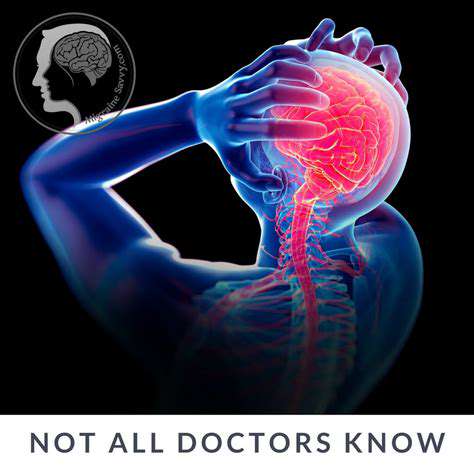
Understanding the Complexity of Migraine
Migraine isn't just a bad headache - it's a full-body neurological storm that disrupts millions of lives globally. The hallmark pounding pain frequently comes with nausea, light sensitivity, and sound intolerance that can leave sufferers bedridden. What makes migraine particularly challenging is how differently it manifests in each person, with triggers and symptoms varying dramatically between individuals. Cutting-edge research continues uncovering surprising connections between gut health, circadian rhythms, and migraine susceptibility.
Neurologists now recognize migraine as a disorder of sensory processing, where the brain becomes hypersensitive to normal stimuli. This explains why routine sounds or lights become unbearable during attacks. The trigeminal nerve pathway appears particularly involved, acting like an overactive alarm system in the brain. These discoveries are revolutionizing how we approach treatment, moving beyond simple pain relief to addressing the underlying neurological dysfunction.
Triggers and Contributing Factors
Migraine triggers form a complex web of interactions that differs for each sufferer. While stress tops the list for many, it's rarely the sole culprit. Dietary factors like aged cheeses or processed meats contain compounds that can directly affect blood vessels. Surprisingly, even healthy foods like citrus fruits or nuts trigger attacks in some individuals. Barometric pressure changes prove particularly problematic, with many patients predicting storms better than meteorologists based on their symptoms.
For women, the estrogen rollercoaster of menstruation, pregnancy, and menopause creates additional challenges. Hormonal migraine patterns often require completely different treatment approaches compared to other types. Genetic testing now reveals certain gene variants affecting serotonin processing that significantly increase migraine risk, explaining why these headaches often run in families.
Diagnostic Challenges and Processes
Diagnosing migraine remains more art than science, as no definitive test exists. Neurologists play detective, piecing together clues from headache diaries, symptom patterns, and family history. The International Classification of Headache Disorders provides diagnostic criteria, but real-world cases often blur these categories. Many patients endure years of misdiagnosis before receiving proper migraine treatment.
Management and Treatment Strategies
Modern migraine treatment has evolved into a sophisticated toolbox of options. Beyond medications, non-drug approaches like biofeedback and cognitive behavioral therapy show remarkable effectiveness for many patients. The new class of CGRP inhibitor drugs specifically target migraine pathways with fewer side effects than older preventatives.
The most successful treatment plans combine multiple approaches tailored to the individual's unique migraine patterns. What works beautifully for one patient may fail completely for another. This underscores the importance of working with headache specialists who understand the full spectrum of available options.
Living with Migraine: Coping Strategies and Support
Thriving with migraine requires developing personalized survival strategies. Many patients create migraine kits with earplugs, eye masks, and emergency medications. Workplace accommodations like flexible scheduling or dim lighting can make employment sustainable. Online communities have become lifelines, offering practical tips and emotional support from others who truly understand.
Emerging technologies like migraine tracking apps help identify subtle patterns and early warning signs. Some patients find relief through unconventional approaches like acupuncture or vestibular therapy. The key is maintaining hope - with proper management, most migraine sufferers can regain significant quality of life.
Our breathing apparatus performs the vital gas exchange keeping us alive. Each breath delivers oxygen while removing waste carbon dioxide in a beautifully balanced system. Anxiety disrupts this equilibrium, often causing rapid, shallow breathing that ironically reduces oxygen delivery. Understanding these physiological connections empowers sufferers to break the anxiety-breathlessness cycle through targeted breathing exercises.